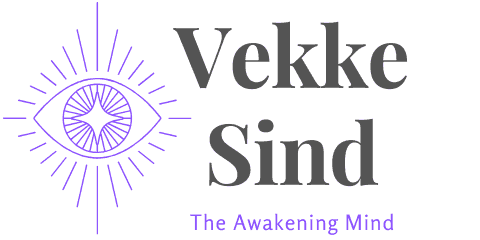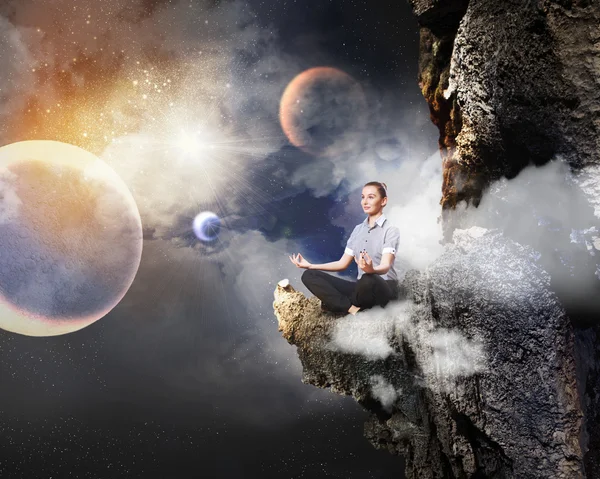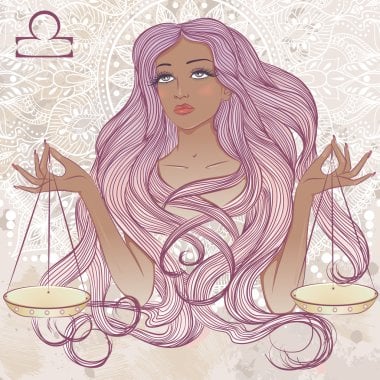Moon phases have long been associated with their influence on human emotions and energy levels. The idea that the moon can affect our mood and behavior dates back thousands of years and is still a topic of interest today.
From ancient beliefs to modern scientific research, there is evidence to suggest that the moon’s phases can have a significant impact on human emotions and energy.
The moon’s gravitational pull affects the Earth’s tides, and it is believed that it can also impact our bodies, which are made up of mostly water.
The moon’s phases, which occur every 29.5 days, are thought to have varying effects on our emotions and energy levels. For example, during a full moon, some people may experience heightened emotions, while during a new moon, they may feel more introspective or contemplative.
Understanding the different phases of the moon and their potential impact on our emotions and energy can help us better navigate our lives and make more informed decisions.
Table of Contents
Understanding the Moon Phases
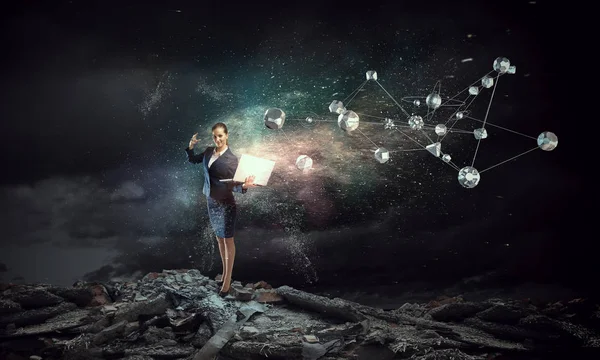
The moon goes through a cycle of phases that repeat approximately every 29.5 days.
The lunar cycle is the period between two consecutive new moons, and it is divided into eight distinct phases. Understanding the moon’s phases is essential for anyone interested in the influence of the moon on our emotions and energy.
The Phases of the Moon
The eight phases of the moon are:
- New Moon
- Waxing Crescent Moon
- First Quarter Moon
- Waxing Gibbous Moon
- Full Moon
- Waning Gibbous Moon
- Third Quarter Moon
- Waning Crescent Moon
The lunar phases are named based on the amount of sunlight reflected by the moon as seen from Earth.
During the new moon phase, the moon is not visible from Earth because it is between the sun and Earth, and the illuminated side is facing away from us. During the full moon phase, the entire illuminated side of the moon is facing Earth.
Waxing and Waning
The waxing phases of the moon are the periods when the moon appears to be growing larger. The waxing crescent moon is visible shortly after the new moon phase and appears as a thin crescent shape. The waxing gibbous moon is visible shortly before the full moon phase and appears as a nearly full circle.
The waning phases of the moon are the periods when the moon appears to be growing smaller. The waning gibbous moon is visible shortly after the full moon phase and appears as a nearly full circle. The waning crescent moon is visible shortly before the new moon phase and appears as a thin crescent shape.
The Lunar Cycle
The lunar cycle begins with the new moon phase and ends with the next new moon phase. Each lunar cycle is divided into four main phases: new moon, first quarter, full moon, and third quarter. The waxing and waning phases occur between these four main phases.
The lunar cycle has been observed and studied for thousands of years, and it has been linked to various cultural and religious beliefs. Some people believe that the moon’s phases can influence our emotions and energy, while others remain skeptical.
In conclusion, understanding the moon phases is crucial for anyone interested in the moon’s influence on our emotions and energy. The waxing and waning phases, along with the four main phases of the lunar cycle, play a significant role in this influence.
- Understanding How Your Emotions and Intuitions Are Influenced
- Understanding the Impact on Your Emotions and Intuition
Moon’s Influence on Gravity and Tides
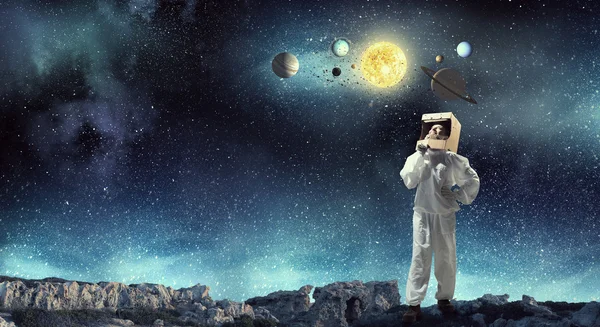
The Moon’s gravitational force affects the Earth in many ways, one of which is the tides. The gravitational pull of the Moon on the Earth’s water creates two tidal bulges on opposite sides of the planet. These bulges cause the ocean tides to rise and fall twice a day.
The gravitational force of the Moon is not the only factor that affects the tides. The Sun’s gravitational pull and the shape of the ocean floor also play a role. However, the Moon’s influence on tides is much greater than the Sun’s, as the Moon is much closer to the Earth.
The Moon’s gravitational pull on the Earth also causes the Earth to bulge slightly, creating a tidal bulge on the side of the Earth facing the Moon, and another on the opposite side. The difference in gravitational pull between these two bulges causes the tides to rise and fall.
The gravitational force of the Moon is strongest when it is at its closest point to the Earth, which is called perigee. When the Moon is at perigee, the tides are higher than usual. Conversely, when the Moon is at its furthest point from the Earth, called apogee, the tides are lower than usual.
In conclusion, the Moon’s gravitational force plays a significant role in the tides on Earth. The gravitational pull of the Moon on the Earth’s water creates two tidal bulges on opposite sides of the planet, causing the ocean tides to rise and fall twice a day.
The Sun’s gravitational pull and the shape of the ocean floor also affect the tides, but the Moon’s influence is much greater due to its proximity to the Earth.
Moon and Its Effect on Light
The Moon is an important source of light for the Earth. It reflects sunlight and creates moonlight, which illuminates half of our planet in its orbit. Moonlight is a natural source of light that can be used to illuminate the night sky. It is also a source of inspiration for artists and poets.
The Moon’s effect on light is not limited to moonlight. The Moon also affects how we perceive artificial light. During a full moon, the night sky is brighter, which can make artificial light appear dimmer. This can be a problem for outdoor lighting, as it can make it difficult to see in areas that are not well-lit.
The Moon’s effect on light is not just limited to its brightness. The Moon also affects the color of light. Moonlight is cooler and bluer than sunlight, which is warmer and yellower. This can affect how we perceive colors and can make them appear different under moonlight than they do under sunlight.
In addition to its effect on light, the Moon also affects our emotions and energy. The phases of the Moon can affect our mood and behavior. For example, during a full moon, people may feel more energized and active, while during a new moon, people may feel more introspective and reflective.
Overall, the Moon’s effect on light is an important aspect of its influence on our lives. It affects how we see the world around us and can even affect our mood and behavior. Understanding the Moon’s effect on light can help us better appreciate its influence on our lives.
Historical Overview of Moon and Emotions
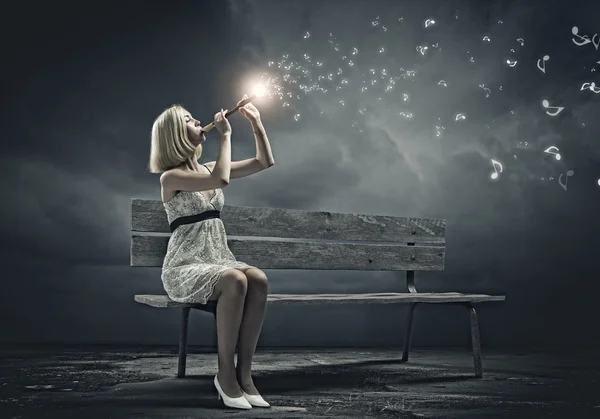
The relationship between the moon and human emotions has been discussed for centuries.
The idea of the moon influencing human behavior and emotions dates back to ancient times, with philosophers such as Aristotle and Pliny the Elder discussing the connection between the moon and madness.
The term “lunacy” comes from the Latin word “luna,” meaning moon, and was used to describe mental illness that was believed to be caused by the moon’s influence.
This belief was prevalent in medieval Europe, where people believed that the full moon had the power to turn people into werewolves and witches.
Despite the lack of scientific evidence, the belief in the moon’s influence on human emotions persisted. Astrology, which associates the position of the moon with personality traits and emotions, also contributed to the idea that the moon affects human behavior.
In the 19th century, the term “lunatic” was used to describe people with mental illnesses, further perpetuating the idea of the moon’s influence on human emotions. However, with the advancement of science and technology, the belief in the moon’s effect on human emotions has been debunked.
While there is no scientific evidence to support the idea that the moon affects human emotions, studies have shown that some individuals may experience changes in their mood and behavior during certain phases of the moon.
However, these changes are likely due to other factors, such as changes in sleep patterns and exposure to natural light.
In conclusion, the belief in the moon’s influence on human emotions has a long and complex history, with roots in ancient philosophy and superstition. While there is no scientific evidence to support this belief, it continues to be a topic of interest and discussion in popular culture.
Scientific Evidence of Moon’s Influence on Emotions
For centuries, people have believed that the full moon can affect human behavior, including mood and mental health. However, scientists have not found conclusive evidence to support this idea.
One study published in the journal “Psychiatry Research” found that participants reported worse sleep quality and lower levels of melatonin during the full moon phase. However, this study had a small sample size and did not control for other factors that could affect sleep quality.
Another study published in the “Journal of Affective Disorders” found that people with bipolar disorder experienced more manic episodes during the full moon phase. However, this study also had a small sample size and did not control for other factors that could affect manic episodes.
Furthermore, a review of 37 studies on the topic concluded that there is no consistent evidence to support the idea that the full moon affects human behavior.
Despite the lack of scientific evidence, some people still believe in the full moon’s influence on mood and mental health. It is important to note that beliefs and superstitions can have a powerful effect on people’s perceptions and behaviors.
In conclusion, while there have been some studies that suggest a possible link between the full moon and human behavior, there is no consistent scientific evidence to support this idea. More research is needed to fully understand the relationship between moon phases and emotions.
Moon Phases and Sleep Patterns
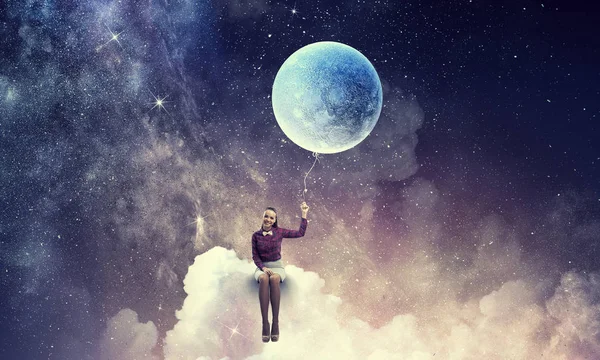
The moon’s phases have long been associated with changes in sleep patterns. Some people believe that the full moon causes people to sleep less, while others believe that it has no effect on sleep at all. Recent research has shed light on the relationship between moon phases and sleep patterns.
One study found that participants in three different communities showed the same pattern of sleep oscillations as the moon progressed through its 29.5-day cycle. Sleep duration changed by between 20 and more than 90 minutes, depending on the phase of the moon.
Another study found that people tend to have more deep sleep and less REM sleep during the full moon phase.
The reason for these changes is not entirely clear, but it is thought to be related to the body’s circadian rhythms. The circadian rhythm is the body’s internal clock that regulates sleep-wake cycles, hormone production, and other bodily functions.
The moon’s phases may influence these rhythms, leading to changes in sleep patterns.
One theory is that the moon’s phases affect the production of melatonin, a hormone that regulates sleep.
Melatonin is produced by the pineal gland in the brain and is responsible for promoting sleepiness. It is thought that the moon’s phases may influence the pineal gland’s production of melatonin, leading to changes in sleep patterns.
Overall, the research suggests that the moon’s phases do have an influence on sleep patterns, but the extent of this influence is not yet fully understood. It is important to note that individual differences in sleep patterns and other factors, such as stress and caffeine intake, may also contribute to changes in sleep during different phases of the moon.
Moon’s Impact on Energy and Intentions
The Moon’s energy is believed to be a powerful force that can affect our emotions, energy levels, and spiritual growth. One of the most significant ways the Moon impacts us is through its phases, which can provide us with the energy we need to manifest our goals and intentions.
During the waxing phase of the Moon, which occurs between the new Moon and the full Moon, the energy is said to be growing and expanding. This is an excellent time to take action on the goals and intentions you set during the new Moon.
You can launch new projects, cultivate new habits, and build new relationships during this period, as the growing energy of the Moon fuels you up to the full Moon.
On the other hand, during the waning phase of the Moon, which occurs between the full Moon and the new Moon, the energy is said to be decreasing and contracting. This is an excellent time for reflection, release, and letting go of what no longer serves you.
You can use this time to assess your progress, let go of negative emotions, and prepare for the next cycle of growth and manifestation.
The full Moon, which occurs when the Moon is opposite the Sun, is considered a time of heightened energy and power. This is an excellent time to celebrate your achievements, express gratitude, and release any negative energy or emotions that may be holding you back.
In conclusion, the Moon’s impact on our energy and intentions is significant, and understanding its phases can help us harness its power to manifest our goals and grow spiritually.
By aligning our energy with the Moon’s cycles, we can tap into its transformative energy and experience renewal and transformation in our lives.
Moon’s Influence on Mood Swings and Sensitivity

The Moon has been long associated with influencing human emotions and moods. While scientific research on the subject might not provide conclusive evidence of a direct causal relationship, anecdotal evidence suggests that the Moon’s phases do have an impact on human emotions and mood swings.
The lunar cycle, which lasts for about 29.5 days, is believed to have a profound effect on people’s moods and emotional states. During the full moon phase, some people may experience heightened sensitivity and emotional intensity, which could lead to mood swings, irritability, and frustration.
On the other hand, during the new moon phase, some people may feel more introspective, calm, and reflective. This could be attributed to the fact that the new moon phase is associated with new beginnings, fresh starts, and a time for self-reflection.
However, it is important to note that not everyone experiences the same emotions and mood swings during the lunar cycle. Some people may not notice any significant changes in their emotional state, while others may experience drastic mood swings and sensitivity.
Furthermore, the Moon’s influence on emotions and mood swings is not limited to just humans. Studies have shown that the lunar cycle can also affect the behavior of animals and marine life.
For instance, some species of fish are known to spawn during the full moon phase, while others may be more active during the new moon phase.
In conclusion, while the scientific community may not fully understand the Moon’s influence on human emotions and mood swings, anecdotal evidence suggests that there may be a correlation between the lunar cycle and emotional states.
Whether or not one believes in the Moon’s influence on emotions, it is important to be aware of one’s emotional state and take steps to manage it appropriately.
Moon Phases and Their Role in Habits and Decisions
The moon has long been associated with our emotions and energy levels.
It is believed that the different phases of the moon can influence our habits and decisions, as well as present challenges and obstacles that we need to overcome. In this section, we will explore the different moon phases and their role in our daily lives.
New Moon
The new moon marks the beginning of a new lunar cycle. This is a time for setting intentions and making plans for the future. It is a good time to start new habits or projects and to focus on personal growth and development.
However, it is important to be mindful of any obstacles that may arise during this time, as the new moon can also bring challenges and difficult decisions.
Waxing Moon
The waxing moon is a time of growth and expansion. It is a good time to focus on building positive habits and making progress towards your goals. This is also a good time for decision-making, as you may feel more confident and clear-headed during this phase.
Full Moon
The full moon is a time of heightened emotions and energy. It is a time of manifestation and completion, where you can see the results of your hard work and efforts.
However, it is important to be mindful of any challenges or obstacles that may arise during this time, as the full moon can also bring intense emotions and conflicts.
Waning Moon
The waning moon is a time of release and letting go. It is a good time to reflect on your habits and decisions and to release any negative energy or emotions that may be holding you back.
This is also a good time for self-care and rest, as you may feel more depleted and in need of recharge during this phase.
Overall, the moon phases can play a significant role in our habits and decisions. By understanding the different phases and their influence, we can learn to work with the moon’s energy and use it to our advantage.
Moon Phases and Reflection

The moon’s phases have been linked to our emotions and energy levels, and they can also affect our ability to reflect and introspect. As the moon moves through its cycle, it can provide us with a natural rhythm for reflection and self-exploration.
During the new moon phase, which occurs every 29.5 days, the moon is not visible from Earth. This phase is associated with new beginnings and is a good time to set intentions and reflect on what you want to achieve in the coming weeks.
It is also a time for introspection and self-reflection, as it allows you to look inward and explore your thoughts and emotions.
As the moon moves into the waxing phase, which lasts for around 14 days, it begins to grow in size and becomes more visible each night.
This phase is associated with growth and progress, and it is a good time to take action on the intentions you set during the new moon phase. It is also a time to reflect on your progress and make any necessary adjustments to your goals.
During the full moon phase, which occurs when the moon is fully illuminated by the sun, emotions can run high. This phase is associated with heightened emotions, and it is a good time to reflect on your relationships and connections with others.
It is also a time to release any negative emotions and let go of anything that is holding you back.
As the moon moves into the waning phase, which lasts for around 14 days, it begins to shrink in size and becomes less visible each night.
This phase is associated with letting go and releasing what no longer serves you. It is a good time to reflect on what you need to let go of in order to move forward with your goals and intentions.
Overall, the moon’s phases can provide us with a natural rhythm for reflection and self-exploration. By tuning into the moon’s energy and using its phases as a guide, we can gain a deeper understanding of ourselves and our emotions, and we can use this knowledge to make positive changes in our lives.
Moon Phases and Their Influence on Nature
The Moon’s phases have a significant impact on nature, including the behavior of animals and the growth of plants. The gravitational pull of the Moon affects the tides, which, in turn, affects the behavior of marine life.
Fish, for example, are known to be more active during the full moon and new moon phases. During these phases, the tides are stronger, and the fish are more likely to feed. Additionally, some fish, such as salmon, use the Moon’s phases to navigate during their migrations.
The Moon also affects the behavior of corals. During the new moon phase, corals release their eggs and sperm into the water, which increases the chances of successful reproduction.
The full moon phase, on the other hand, can cause corals to release their eggs prematurely, which can lead to a decrease in reproduction rates.
Plants are also affected by the Moon’s phases. The Moon’s gravitational pull affects the water in the soil, causing it to rise and fall. This can affect the growth and development of plants, as well as their ability to absorb nutrients.
In conclusion, the Moon’s phases have a significant impact on nature, including the behavior of animals and the growth of plants. Understanding these influences can help us better appreciate and protect the natural world around us.
Myths and Theories about Moon Phases
Moon phases have been associated with a variety of myths and theories throughout history. Some of these beliefs have been proven to be inaccurate, while others remain unproven. In this section, we will explore some of the most common myths and theories about moon phases.
Theories
One of the most popular theories about moon phases is that they can affect a person’s emotions and energy levels.
Some people believe that the full moon can cause people to act erratically or experience mood swings. Others believe that certain moon phases can enhance creativity or intuition.
While there is no scientific evidence to support these claims, some people still believe in the power of moon phases. Many people use moon phases as a way to set intentions or goals for themselves, or to help them connect with their spiritual side.
Werewolf Myth
Another popular myth surrounding moon phases is the belief that they can turn people into werewolves. According to this myth, a person who is bitten by a werewolf will transform into a werewolf during the full moon.
While this myth has been popularized in movies and books, there is no evidence to support the existence of werewolves or their connection to moon phases. It is important to remember that myths and legends are often based on superstition and are not grounded in scientific fact.
Overall, while there are many myths and theories surrounding moon phases, it is important to approach them with a critical eye and rely on scientific evidence when making decisions about our emotions, energy levels, and overall well-being.
Conclusion
Moon phases have been a topic of fascination for centuries, and their influence on human emotions and energy is a subject of ongoing research.
While there is some evidence to suggest that the moon can affect our moods and behaviors, the scientific community has yet to reach a consensus on the extent of this impact.
Some studies have suggested that the full moon can lead to increased hospital admissions and emergency room visits, as well as higher rates of crime and accidents. Others have found no significant correlation between moon phases and these types of events.
Similarly, there is some evidence to suggest that the moon can affect our sleep patterns, with some people reporting poorer sleep quality during the full moon. However, this effect appears to be relatively small and may not be noticeable for everyone.
Overall, while the idea that the moon can influence our emotions and energy is intriguing, it is important to approach this topic with a critical eye and be wary of making exaggerated or false claims. As with many areas of science, further research is needed to fully understand the relationship between moon phases and human behavior.
